Florida Plant Rescue: Preservation Progress for Florida’s Imperiled Plants
When the idea for a cooperative seed collection initiative for the state of Florida arose several years ago, there were many ambitious but critical tasks ahead of us: gather together Florida’s plant conservation experts and practitioners to work in a carefully coordinated manner; develop a priority list of Florida’s most imperiled species to target for collection efforts; develop sources of funding to sustain our work; and most importantly, get out in the field and back in the lab to do the real work of seed collection and processing. Our ultimate goal is simply stated but not so simply achieved: to make conservation collections of all the rare plant species in Florida to safeguard wild populations against extinction in the face of severe and myriad threats to their existence. After completing many of those foundational goals and as we enter our fifth year of the project, the Florida Plant Rescue (FLPR) initiative has made significant progress in safeguarding the imperiled plants of the Sunshine State—with even more conservation work on the horizon for 2025.
The initiative, which is led by CPC in collaboration with the existing Florida community of botanical experts within the CPC Network of Conservation Partners, greatly benefits from incredible, boots-on-the-ground conservation work that is completed by the ever-expanding network of FLPR partners. These include conservation staff at Atlanta Botanical Garden, Bok Tower Gardens, Fairchild Tropical Botanic Garden, Florida Native Plant Society, Florida Natural Areas Inventory, The Institute for Regional Conservation, Marie Selby Botanical Gardens, Montgomery Botanical Center, Naples Botanic Garden, and our newest members, The Jones Center at Ichauway and the Seed Biology Lab in the Department of Environmental Horticulture at the University of Florida. It is their local botanical expertise, rugged field work, and painstaking seed processing that has brought us this far in the project.
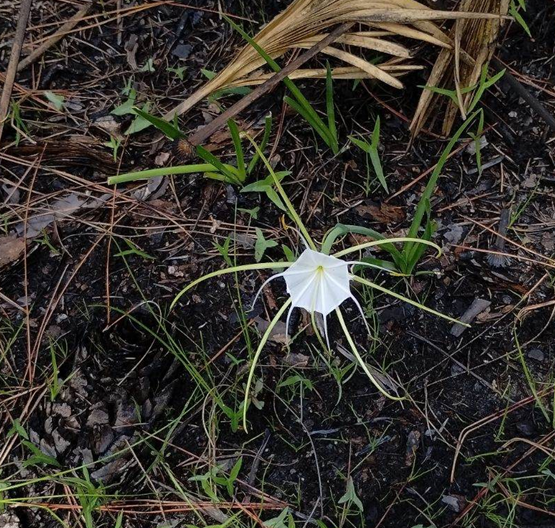
During the 2024 collection season, FLPR partners were collectively able to make collections of 17 globally rare plantspecies that occur in Florida and in many cases, are endemic to the state. All of these species either previously had noex situ conservation collections in seed bank storage or had fewer than 5 distinct populations represented in storage. The process of securing each of these species in collection involves multiple steps in which each partner has to 1) research the known locations for the species of interest and choose an appropriate population for collection, 2) make pre-collection field visits to assess the health of the population and place any needed collection materials around developing fruits, 3) carefully perform the actual seed collection in the field, 4) clean and prepare seed for long-term storage, and 5) when possible, send additional seed for duplicate storage at the National Laboratory for Genetic Resource Preservation. Encouragingly, FLPR’s collection success and capacity has been steadily growing each year of the project. In 2022, FLPR partners collectively made 12 seed collections and in 2023 they made 15 collections. Thus, 2024 was our busiest and most productive collection season yet! In total and throughout the lifespan of the project, we’ve been able to make 51 collections from Florida’s rarest plant species.
Of course, a project focused on preserving ex situ collections of rare plant species cannot ignore the fact that many of these species have recalcitrant seed and cannot be banked via traditional means. These exceptional species are still in need of our attention but require an extra level of problem-solving to effectively preserve. In both 2023 and 2024, CPC was able to award two exceptional species projects to FLPR members.
In 2023, the exceptional species curation projects focused on the extremely rare species, Manasota pawpaw (Asimina manasota) and Punta Gorda spiderlily (Hymenocallis punta-gordensis), with with the projects led by Marie Selby Botanic Garden and Naples Botanic Garden, respectively. The Manasota pawpaw occurs in just one county in central-south Florida where there may be as few as just a couple dozen plants left in the wild, only about half of which are protected on public lands. Marie Selby Botanical Gardens collaborated with Dr. Valerie Pence and the Lindner Center for Conservation and Research of Endangered Wildlife at the Cincinnati Zoo and Botanical Garden (CREW) to test in vitro protocols for propagation and cryopreservation for this species.
They collected fresh, immature stem tissue which has led to the successful establishment of culture lines, based on protocols already developed by Dr. Pence for other rare Asimina species. The Punta Gorda spider lily is a species endemic to just Charlotte County, Florida, growing in pine flatwoods, and blooming in the scorching summer heat. Naples Botanical Garden found and mapped several populations growing in the Fred C. Babcock/ Cecil M. Wildlife Management Area. From these plants, they collected seeds from which to grow out plants to preserve in their living collection.
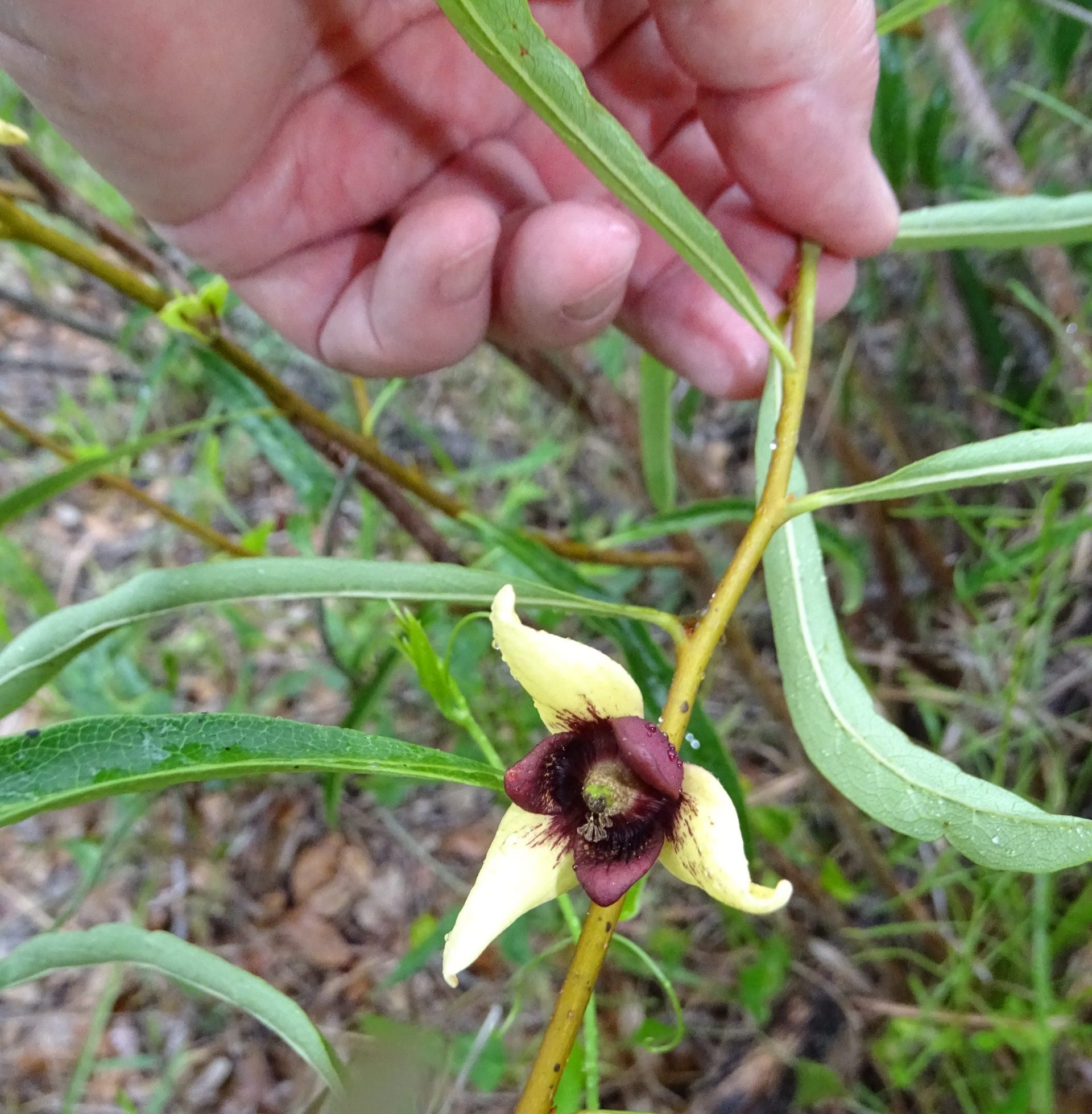
In 2024, the two exceptional species curation projects undertaken for FLPR were those for Henry’s spiderlily (Hymenocallis henryae var. henryae) and Florida royal palm (Roystonea regia), granted to Atlanta Botanical Garden and Naples Botanic Garden, respectively. Henry’s spiderlily is a species that, due to its many coastal and low-lying locations, is expected to soon be detrimentally impacted by climate change-associated sea-level rise. While Florida royal palm is a fairly common species in botanical garden cultivation, these plants do not originate from the very few remaining wild populations left in southern Florida. Thus, projects for both these species were determined to be valuable toward their conservation and are currently ongoing.
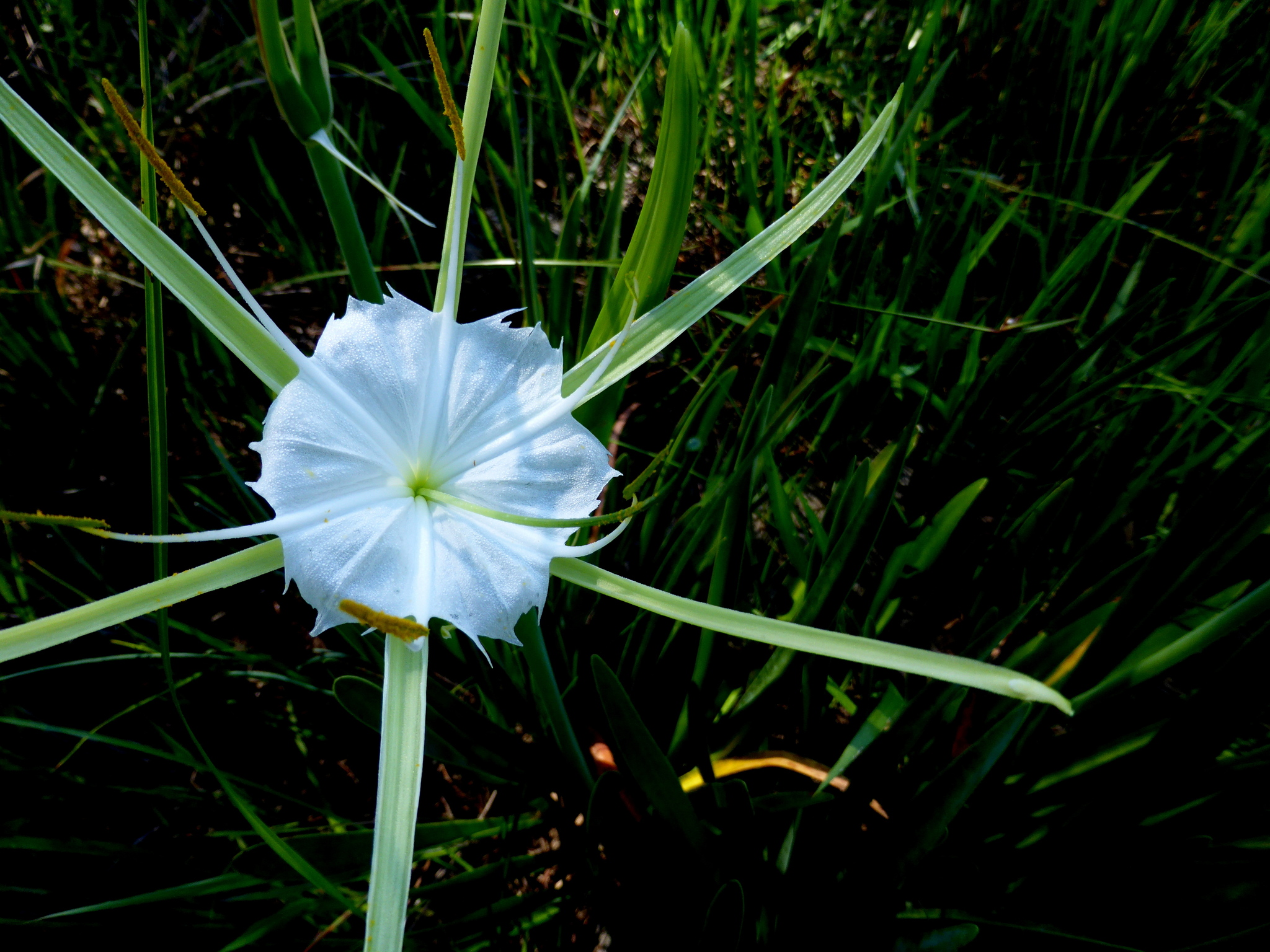
With all these collections being made by multiple partners across the state and accessions constantly being added to seed banks, there was a critical need to keep track of data in a way that allows FLPR partners to tie the information back to the rare plant populations. A major accomplishment for the FLPR initiative was the creation of a seed accessiondatabase that is linked to the state’s natural heritage spatial database of rare plant populations maintained by the Florida Natural Areas Inventory. Having this combined resource available to both CPC staff and FLPR partners now allows for even more precise prioritization of both species and specific populations for collection where they are most needed. This also enables us keep organized records of what has been collected, where it has been collected from, who has completed the collection, and when. Since early 2024, FLPR partners have been able to access and use this database to make their collection selections for planning purposes, as well as feed their own collection data back into the system. Their field observations of these rare plant populations thus become available to the wider plant conservation community and allow for enhanced, updated conservation assessments for these species.
Expanding our reach beyond Florida, in 2024, CPC’s Conservation Program Manager, Tina Stanley, had the opportunity to give a presentation about FLPR at the Southeastern Partners in Plant Conservation Conference hosted at Atlanta Botanical Garden, thus spreading the word about our important and impactful work to the region’s broader conservation community. This gathering of practitioners and researchers throughout the Southeast region takes places just once every four years and is a wonderful opportunity to learn of the latest plant conservation ideas, methods, and questions as well as form connections and collaboration opportunities. We hope this could help to inspire future, similarly themed projects in other states or regions!
Looking ahead to the 2025 collection season, we will continue to work toward securing additional Florida plant species in seed bank collection. We expect to make 22 additional traditional seed collections for globally rare species in the state, as well as execute two additional exceptional species projects for plant species that cannot be traditionally seed banked. Excitingly, a large majority of these collections will be from species not yet represented in any existing seed bank. As a notable advancement for the project, we also plan to fund infrastructure development for FLPR partners so that we can expand our collection, processing, and storage capacities for many years to come.
-
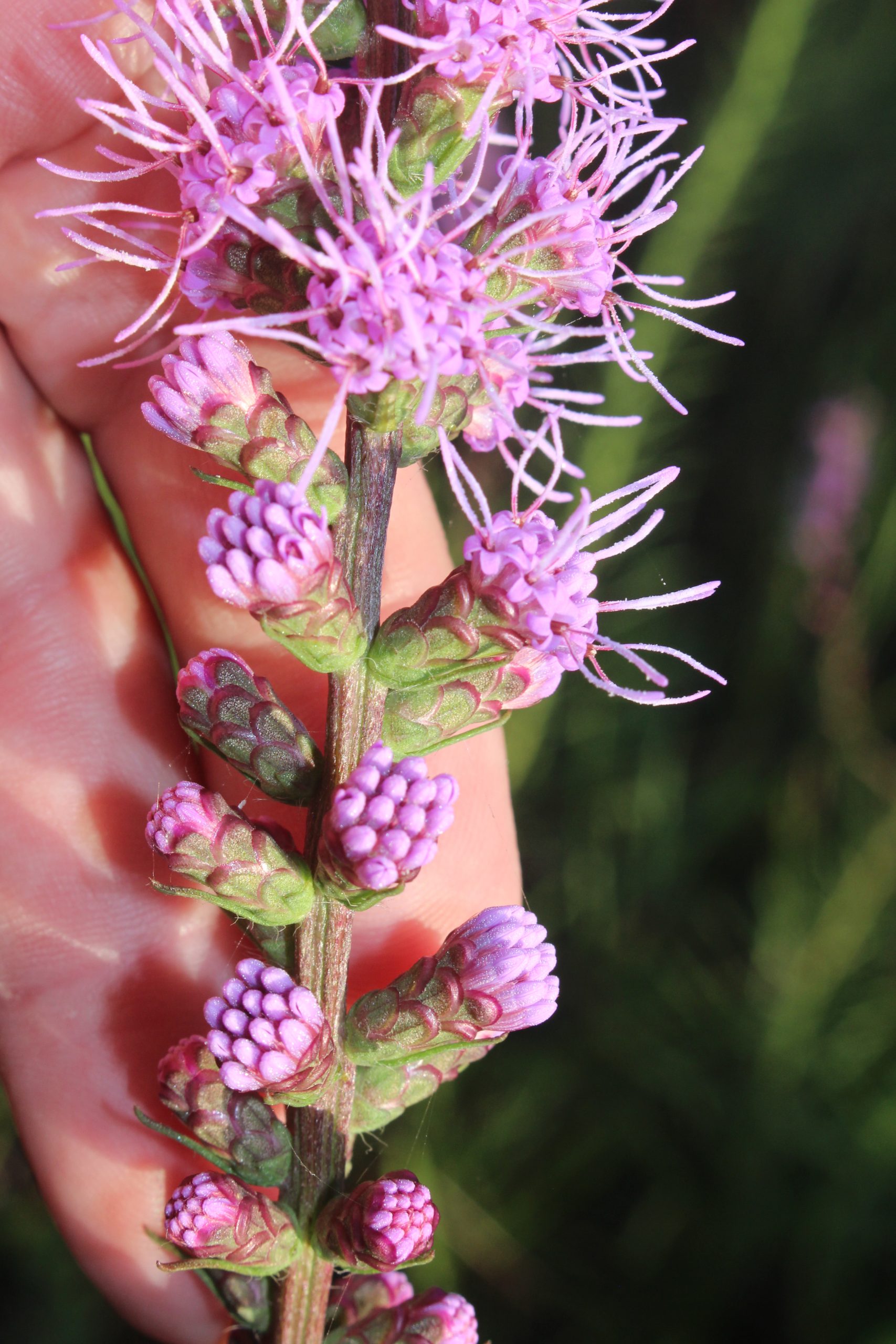
Savannah Gayfeather (Liatris savannensis) phyllaries with obtuse apices help to distinguish this species of Liatris in southwest Florida. Photo Credit: Bruce Holst -
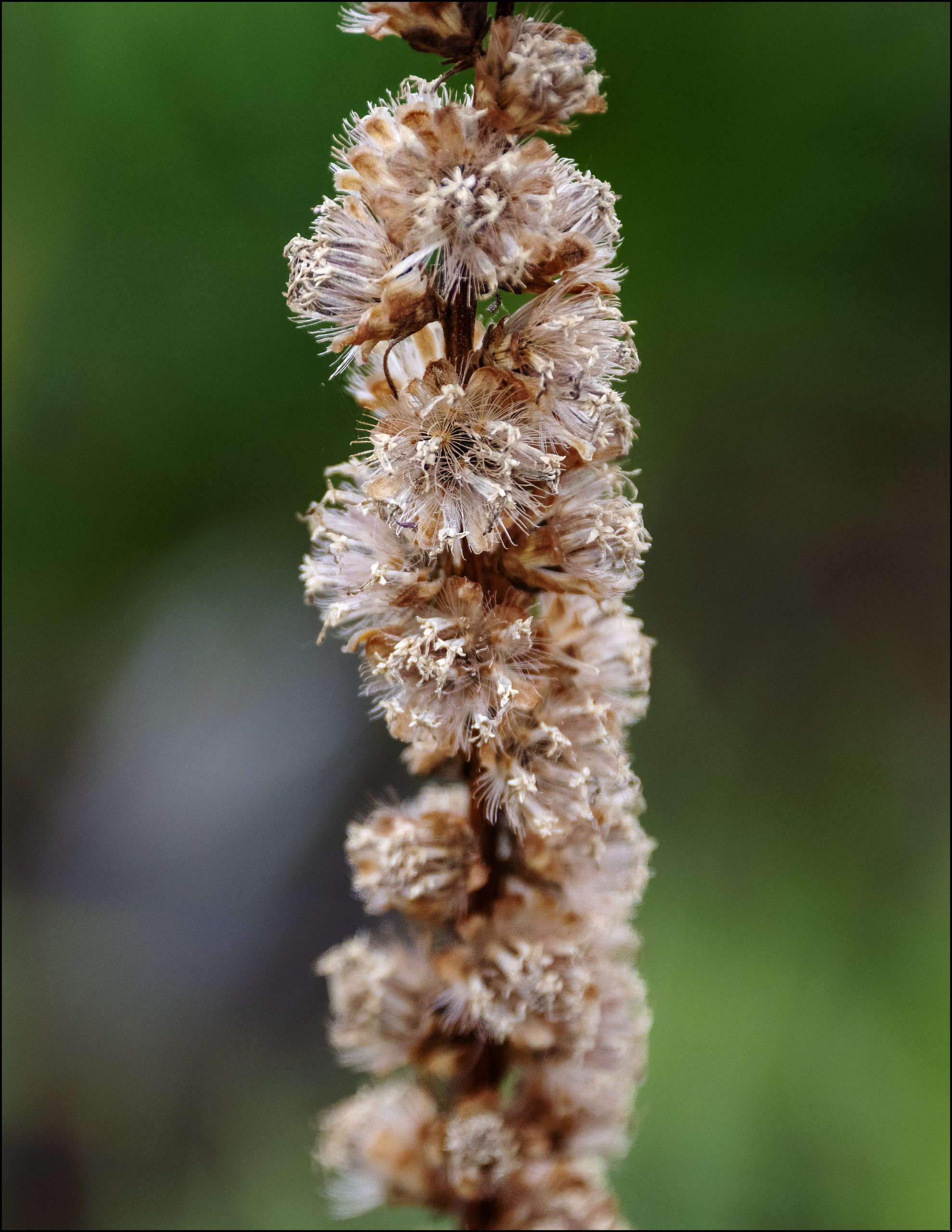
Liatris savannensis seeds in situ in Sarasota County. Photo Credit: Wade Collier -
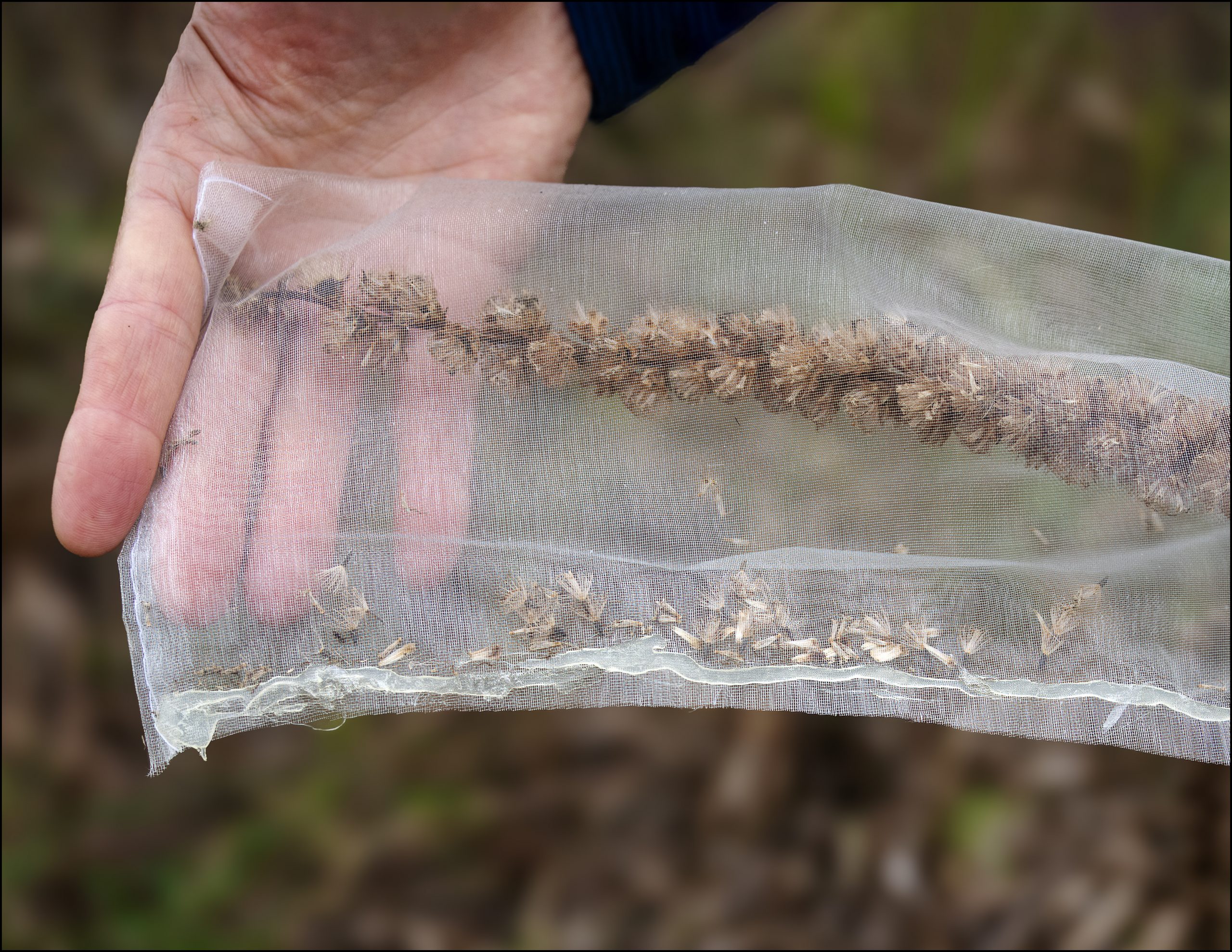
Savannah Gayfeather (Liatris savannensis). Seed collection bags help to capture seeds in case of wind or rain that might disperse them. Photo Credit: Wade Collier